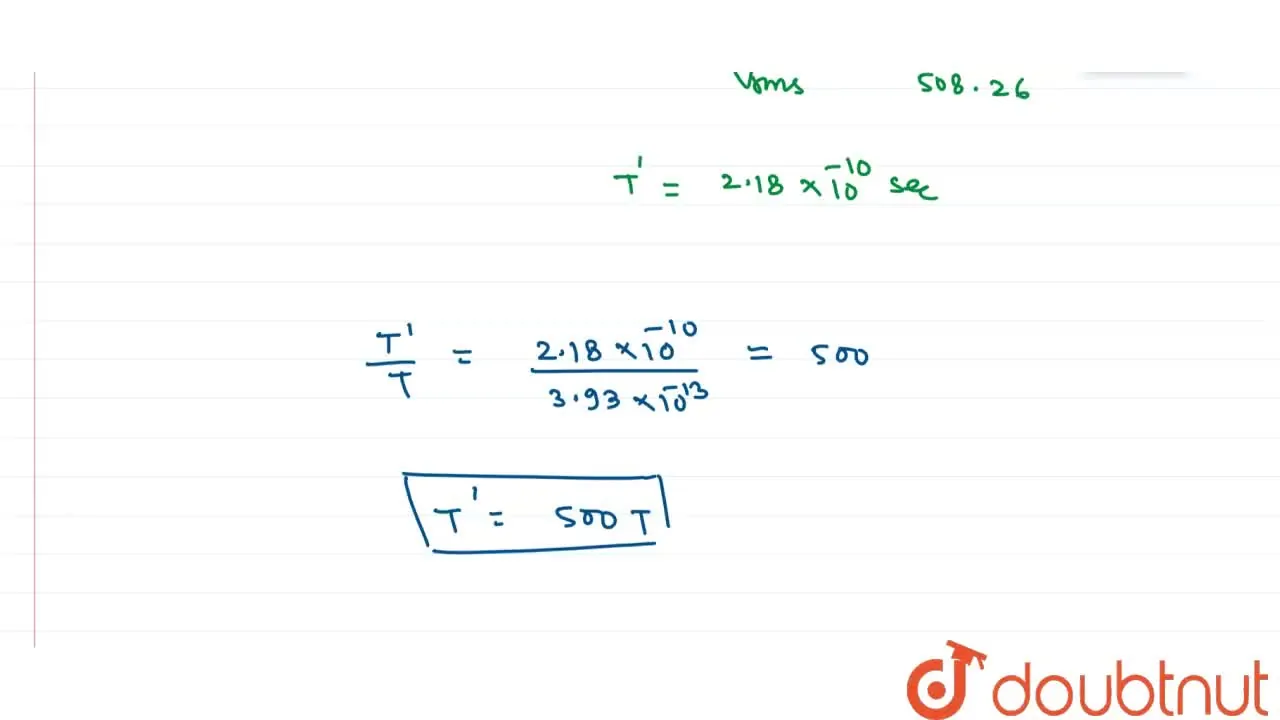Estimate the mean free path and collision frequency of a nitrogen molecule in a cylinder containing nitrogen at 2 atm and temperature . Take the radius of a nitrogen molecule to be roughly . Compare the collision time with the time the molecule moves freely between two successive collisions. (Molecular mass of nitrogen = 28.0 u).
Mean free path m
Collision frequency
Successive collision time (Collision time)
Pressure inside the cylinder containing nitrogen, P = 2.0 atm Pa
Temperature inside the cylinder, C =290 K
Radius of a nitrogen molecule,
Diameter,
Molecular mass of nitrogen, kg
The root mean square speed of nitrogen is given by the relation:
where,
R is the universal gas contant
=508.26 m/s
The mean free path (l) is given by the relation:( )Where,
k is the Boltzmann constant
Collision frequency
Collision time is given as :
Time taken between succesive collisions:
Hence, the time taken between successive collisions is 500 times the time taken for a collision.
Related Playlists
Similar Questions
Estimate the mean free path and collison frequency of a nitrogen molecule in a cylinder containing nitrogen at 2.0 atm and temperature 17∘C. Take the radius of a nitrogen molecule to be roughtly 1.0 Å . Compare the collision time with the time the molecule moves freely between two successive collision ( molecular mass of N2=28.0 ) . [Optional ]
View SolutionConsider a collision between an argon molecule and a nitrogn molecule in a mixture of argon and nitrogen kept at room temperature. Which of the following are possible?
View SolutionIn a dilute gas at pressure P and temperature T, the mean time between successive collisions of a molecule varies with T as :
View SolutionCalculate the mean free path of nitogen at 27∘C when pressure is 1.0 atm. Given, diameter of nitogen molecule = 1.5Å,k=1.38×10−23JK−1. If the average speed of nitrogen molecules is 675ms−1, find the time taken by the molecule between two successive collsions and the frequency of collisions.
View SolutionAn ideal gas is enclosed in a cylinder at pressure of 2atm and temperature, 300K. The mean time between two successive collisions is 6×10−8 s. If the pressure is doubled and temperature is increased to 500K, the mean time between two successive collisions will be close to:
View SolutionA flask contains argon and chlorine in the ratio 2:1 by mass. The temperature of the mixture is 27∘C. Obtain the ratio of
(i) average kinetic energy per molecule, and
(ii) root mean square speed of the molecules of two gases.
Atomic mass of argon = 39.9 u, Molecular mass of chlorine = 70.9 u.View SolutionEstimate the mean free path for a water molecule in water vapour at 373 K. Given diameter of water molecule =2Å and number density of water molecule (at NTP) =2.7×1025m−3. Compare it with interatomic distance for water =40Å.
View SolutionEstimate the number of collisions per second suffered by a molecule in a sample of hydrogen at STP.The mean free path (average distance covered by a molecule between successive collisions)=1.38xx10^(-5)cm.
View SolutionAn alkaloid contains 17.28% of nitrogen and its molecular mass is 162. The number of nitrogen atoms present in one molecule of the alkaloid is
View SolutionTwo gaseous molecules A and B are traveling towards each other. Let the mean free path of the molecule be σ and Z be the collision number with other molecules at pressure 1atm. Answer the following questions
The free path of gas molecule is the distanceView Solution


